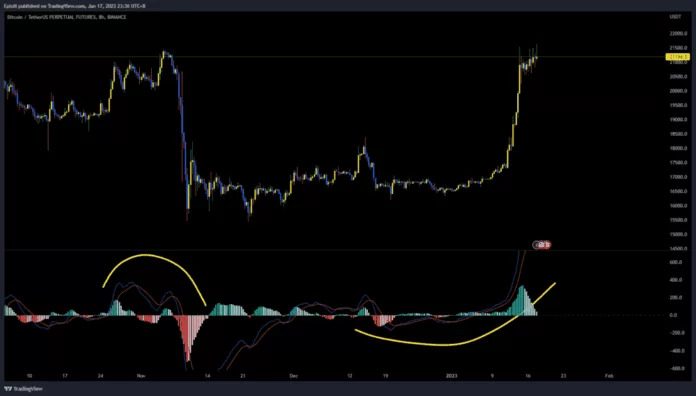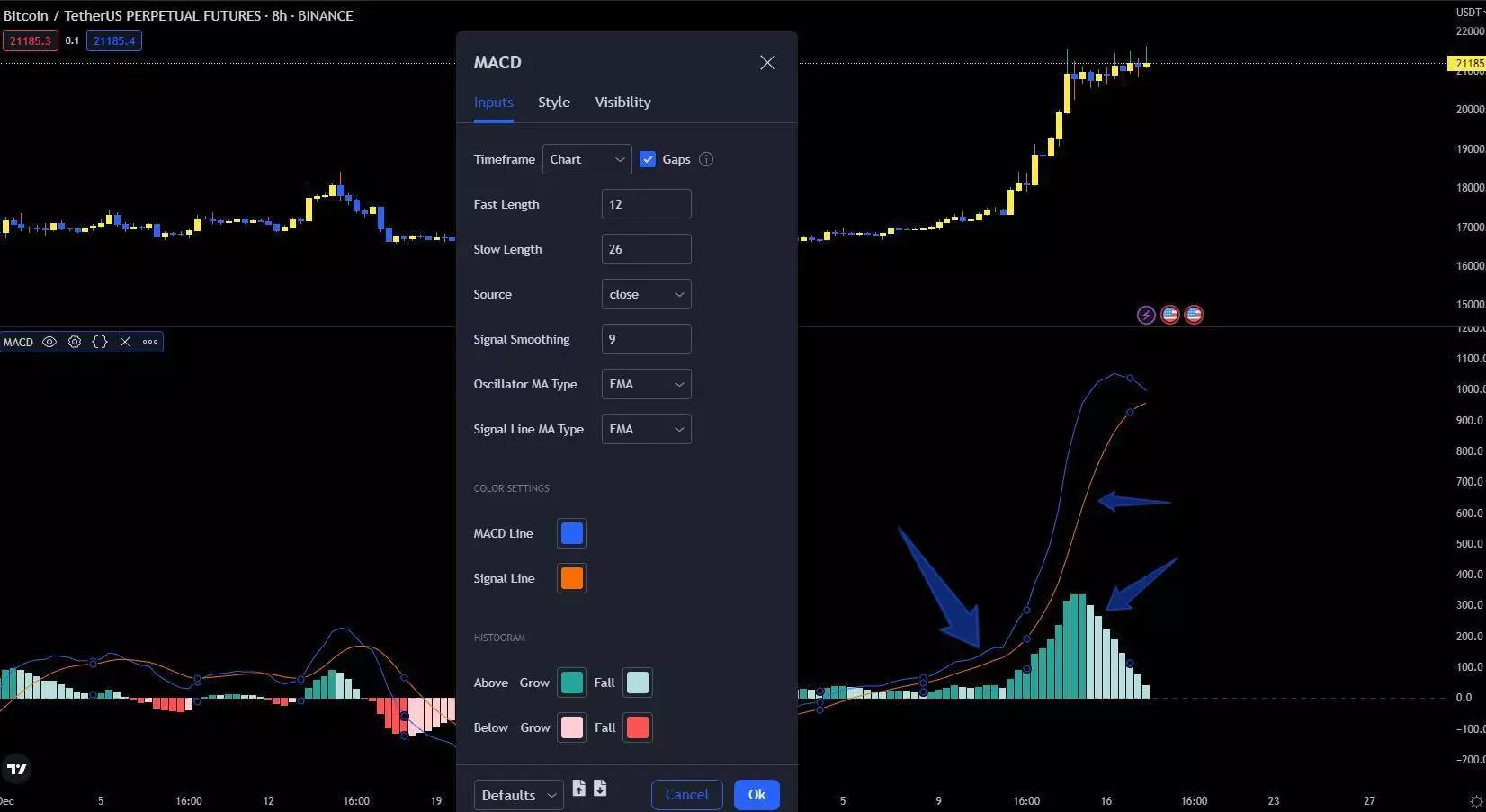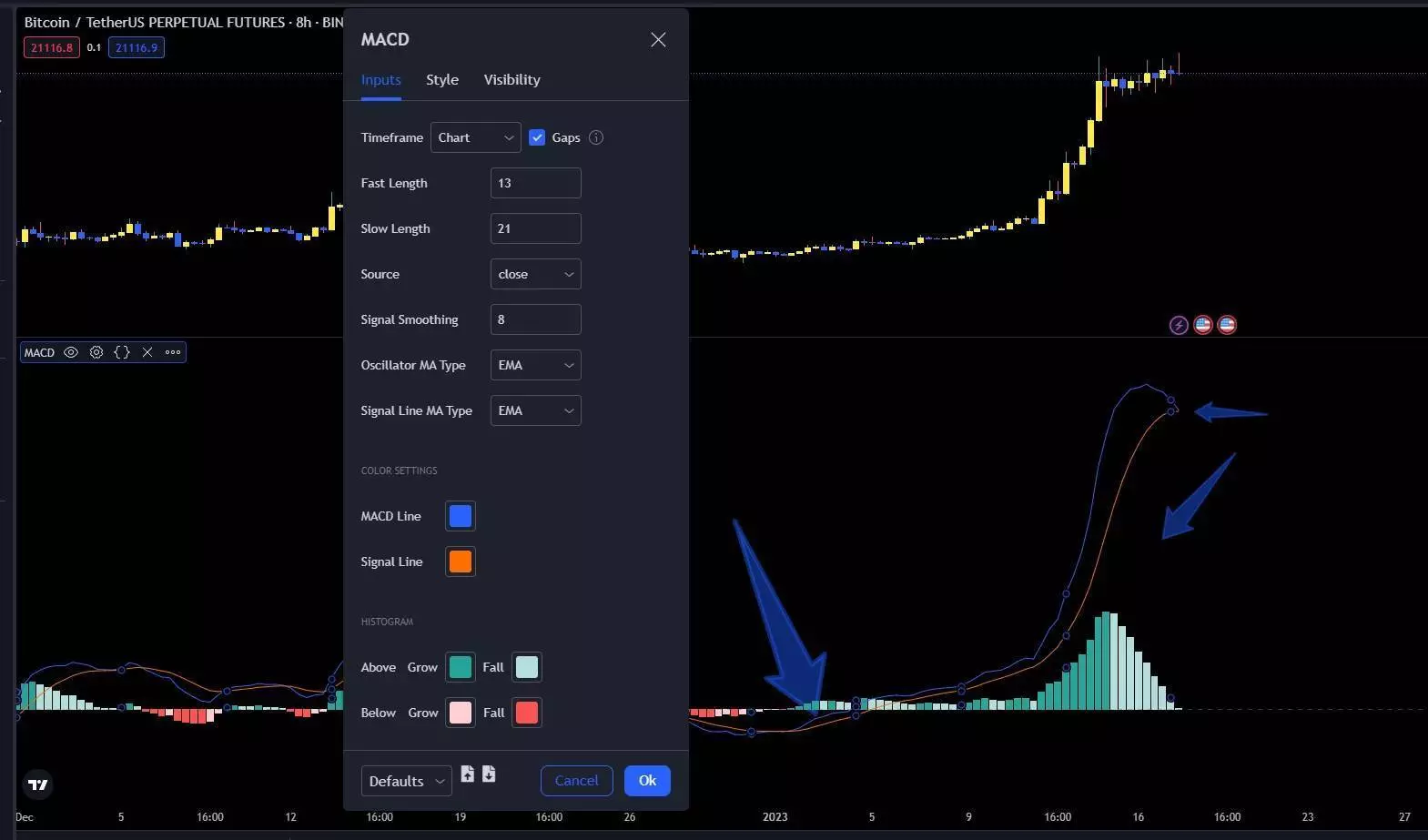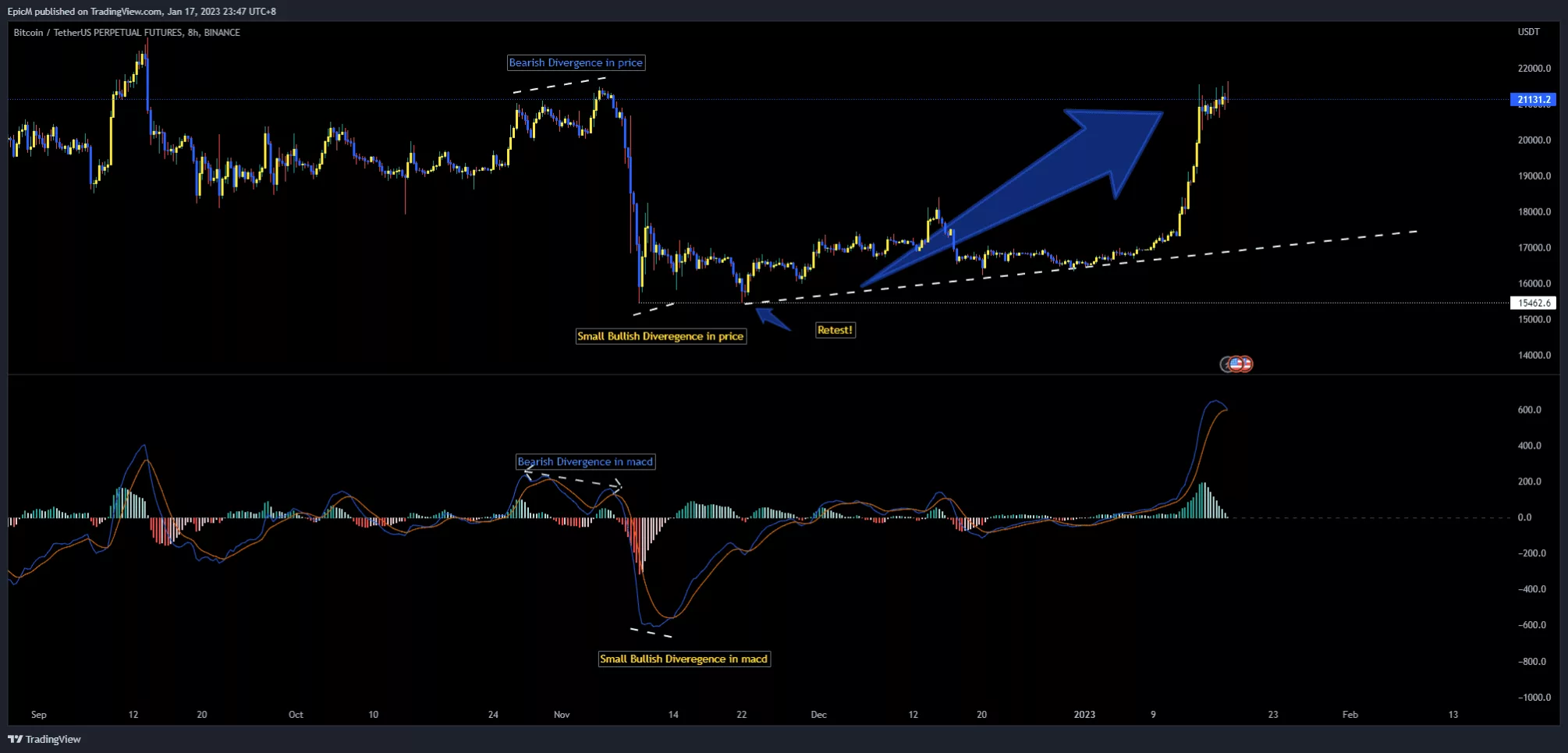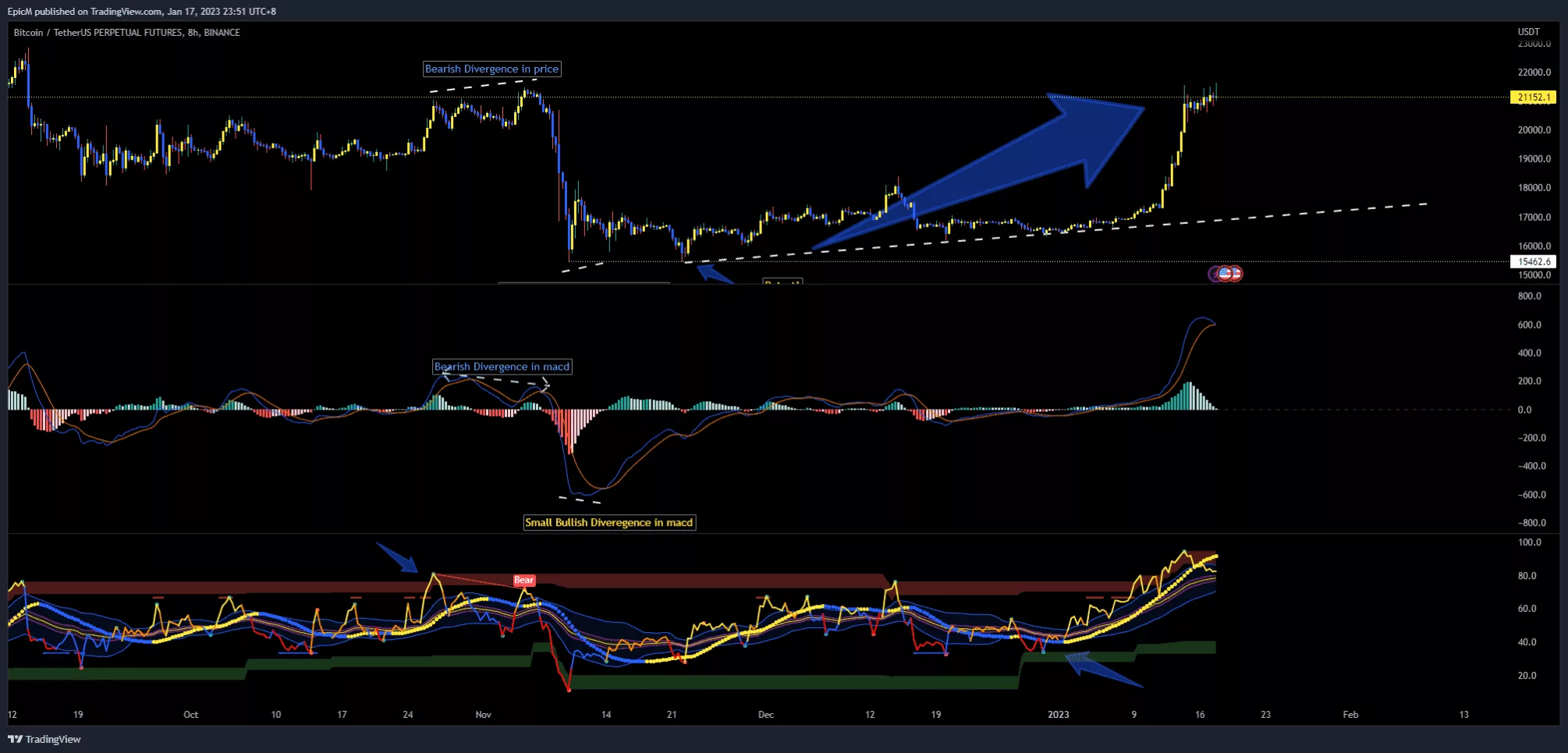Do you often equate your approach to day trading with sheer gambling? Are you prepared to deepen your involvement with the stock market and become a committed trader? If you resonate with these statements, then grasp the importance of correctly utilizing the MACD in your day trading — it is utterly pivotal. This thorough guide will demonstrate how you can supercharge your trading with this robust tool to make informed choices and substantially increase your earnings.

Trading stocks can be overwhelming, especially if you don’t understand the technical indicators used by professional traders. MACD is one of the most popular indicators among experienced traders, as it gives them an edge in making accurate predictions about stock movements. With its ability to identify trends early on, it’s no wonder why so many people rely on MACD for their trading strategies.
The good news is that anyone can learn how to use MACD for day trading – regardless of experience or skill level. This guide will provide simple instructions and helpful tips on how to get started with this powerful tool. From understanding the basics of MACD analysis to crafting effective strategies for long-term success, this guide has everything you need to take your trading game up a notch.
Moving Average Convergence Divergence (MACD): The Basics
The Moving Average Convergence Divergence (MACD) indicator is one of the most popular tools used in day trading. In fact, according to a survey conducted by the American Association of Individual Investors in 2019, over 40% of traders use the MACD. The indicator works by combining two different exponential moving averages (EMA) of closing prices that are plotted over a chart, along with a signal line and MACD line.
I calculated the MACD line by subtracting the 26-day EMA from the 12-day EMA. This MACD line then provides traders with insight into momentum shifts in the underlying security or index. Meanwhile, the signal line is an EMA of the MACD line itself, which helps to smooth out price fluctuations and provide a clearer picture of what direction prices are likely to move in next.
The combination of these two lines allows traders to identify potential buy or sell signals for their investments. When the MACD and signal lines cross each other, it signals that there could be a shift in momentum and a potential entry point into a trade. By interpreting these crossovers appropriately, traders can capitalize on potential reversals in trends and maximize their returns.
Using MACD Crossover Signals For Tradable Reversal Patterns
Analyzing the market and looking for tradable patterns is a popular day trading strategy. When the signal line crossed the MACD line, one trader identified a buying signal that gave him significant profits.
Knowing when to buy or sell requires understanding of the MACD crossover signals. For example, if the MACD line moves above the signal line, it signifies a bullish trend and may be an ideal time for traders to make a purchase. They signal bearish trends when the MACD drops below the signal line and traders should sell at this point. By using informed decisions backed by MACD data, traders can capitalize on profitable trades and increase accuracy when deciding.
It is essential for traders to determine which settings will best suit their trading style for optimal accuracy in identifying trade signals. This way they can be rest assured their decisions are based on reliable data rather than guesswork.
Optimizing Your MACD Settings For Maximum Accuracy
For intraday trading, using a strategic approach is essential for unlocking potential opportunities and reaching profits. To ensure accuracy, customizing your settings frequently can help you make the most of the data. Though adapting one’s settings may initially seem complex, those with a thorough knowledge of this analytical tool can learn to maximize their chances of profiting from short-term trends.
Investors must also know how each setup affects the indicator’s performance when customizing their parameters. Doing so helps even novice traders find success – particularly when they adjust according to their individual needs. Once the correct setup is in place, individuals can take advantage of any day’s market dynamics and spot potentially profitable trades with ease. Dedicating time to familiarize yourself with all facets of this technical resource can be beneficial for those hoping to attain optimal results in the stock market.
In conclusion, understanding how to adjust your MACD settings is critical for earning profits in today’s financial markets. With guidance and practice, recognizable trading opportunities become easier to spot, giving investors greater confidence amidst changing conditions. As we gain more familiarity with this analytical instrument, these investors are more likely to achieve their desired returns!
Spotting Trend Reversals With The MACD Indicator And Divergence
The MACD indicator can spot trend reversals by looking for divergence and the changing shape of the MACD histogram. The MACD line, signal line, and histogram all work together to provide a sign of how price is trending. Here is a quick example: when the MACD line crosses below the zero line, it shows that the trend is bearish. Conversely, if the MACD line crosses above the zero line, it signifies a bullish trend.
To better understand how to use the MACD indicator for spotting trend reversals, let’s break down its components:
1) The MACD divergence is when there are significant differences between price action and the speed of movement showed by the histogram.
2) The MACD histogram shows momentum changes in price action by plotting two different moving averages against each other.
3) The MACD line compares two different exponential moving averages (EMA). When these EMA lines crossover each other on a chart, it produces a buy or sell signal.
4) Finally, when the MACD crosses below or above the zero line on a chart, this will show whether there is a bearish or bullish trend, respectively.
By monitoring these various components of the MACD indicator and comparing them with price action on your chart, you can accurately identify trend reversals as they occur in real-time.
This can help you make more informed decisions about when to enter and exit trades depending on market conditions. With practice and patience, mastering your interpretation of this powerful tool will become second nature–allowing you to take advantage of any trading opportunity that comes your way! Next up, we’ll look at how to interpret macd histograms to detect momentum changes in price action.
Interpreting MACD Histograms To Detect Momentum Changes In Price Action
The MACD Histogram is a powerful tool for analyzing price action and momentum. It can detect shifts in the trend of a security or currency pair, allowing traders to identify possible entry or exit points.
It is important to understand the difference between the MACD line and the signal line, as the MACD line measures the difference between two exponential moving averages of closing prices, while the signal line is a smoothed version of this difference. The histogram then plots this difference as a visual representation of momentum shifts in price action.
Interpreting the MACD Histograms enables traders to find potential trading opportunities based on changing momentum. Incorporating macd trading strategies into your forex trading plan can help increase profitability by making it easier to stay ahead of market movements. Understanding how to interpret these indicators effectively is essential for any successful day-trading strategy.
Incorporating MACD Trading Strategies Into Your Forex Trading Plan
Incorporating MACD trading strategies into your Forex trading plan is essential for successful day trading. Examining the momentum of a security’s price and assessing its trend strength can provide useful insights when analysing the indicator. When putting together an effective trading strategy, traders must be able to recognize discrepancies between two indicators, which could show a reversal or continuation in the market.
To maximize profits, it is important to consider different time frames when using MACD strategies. Technical insight into higher time frames such as four-hour and daily charts can offer varied perspectives on upcoming trends and help identify potential profitable trades more accurately.
Having a thorough understanding of technical analysis and its various components helps traders make better informed decisions within the international currency markets; increasing their chances of success with each move they make.
Reading Intraday Trade Signals From The Moving Average Convergence Divergence (MACD)
The moving average convergence divergence (macd) is a powerful technical indicator used in day trading to identify buy and sell signals. It can help traders spot trends and momentum, as well as generate trade entries and exits.
Here are a few key points about the macd:
1) The macd is a combination of two exponential moving averages, usually 12-day EMA and 26-day EMA.
2) The macd line is calculated by subtracting the slower EMA from the faster EMA.
3) A nine-day exponential moving average (EMA) of the macd line is called the signal line.
4) When the macd line crosses above or below the zero line, this could show a trend change or reversal.
By reading intraday trade signals from the macd, traders can gain greater insight into potential reversals or market momentum. This knowledge can then improve their day trading strategies and profitability. Combining different technical indicators with the macd can help enhance accuracy of your setups even further.
Enhancing Accuracy Of Your Setups By Combining Different Technical Indicators With The MACD
The Moving Average Convergence Divergence (MACD) is a popular technical indicator and can be a useful tool for day traders. People often look to incorporate it into their technical analysis when trading. By combining different indicators with the MACD, you can get an even better advantage in the markets.
Pairing the MACD line with the Relative Strength Index (RSI) or Exponential Moving Average (EMA) can boost your trading results. Combining multiple indicators can help confirm entry and exit points of a crossover strategy. You may need to adjust indicator settings depending on the asset being traded or prevailing market conditions.
It is important to note that using multiple indicators does not guarantee success and should only be used as another indicator of confirmation for making more informed decisions when entering and exiting positions. With practice and experience, you will learn how to maximize your crossover strategies with the MACD, allowing you to increase its accuracy and enhance your overall trading performance in currency markets.
Tips To Optimize Your Crossover Strategy With The MACD Indicator

Using the Moving Average Convergence Divergence (MACD) for day trading is an intricate endeavor. Careful analysis needs to be done in order to make the most accurate predictions and increase profits. In this section, we’ll investigate how to maximize the use of this indicator for a more sophisticated crossover strategy.
Unlike other technical indicators, MACD is a lagging indicator which is less predictive of short-term market movements. That being said, we can use together it with trend lines, support/resistance levels, and volume analysis to detect potential trading opportunities. To get the most out of it, tracking where it crosses above or below the zero line will help identify when buyers or sellers are gaining strength in the market, potentially providing signals that can show future price shifts.
Traders should also observe how long it takes for crossovers to happen as well as their frequency in order to decide if they merit actioning on. Scrutinizing these patterns may pinpoint any areas where one’s strategy might need improvement so that they can adapt it accordingly from now on and get better knowledge of possibly profitable trades. By combining all elements described above, traders may reap rewards with increased accuracy and greater returns with their MACD crossover strategy.
Successfully using MACDs is far from easy, but understanding its mechanics, along with employing other technical indicators and auxiliary tools carefully can assist traders in further sharpening their trading strategies and making more prudent decisions about when to buy and sell for optimal success in currency markets.
FAQ
What is the MACD indicator?
The Moving Average Convergence Divergence (MACD) indicator is a technical analysis tool that is used to measure momentum and trend direction in financial markets. It comprises two moving averages (an exponential moving average, or EMA, and a slower moving average) and a histogram which plots the difference between these two lines. This can help traders identify buy and sell signals, as well as possible reversals in price direction.
How do I use the MACD indicator for day trading?
Using the MACD when day trading can help traders identify potential trading opportunities in both bearish and bullish markets. The basic steps include recognizing crossovers of the MACD line, looking for bullish and bearish divergences to spot reversals, and using histograms to track momentum changes. It’s important to also monitor your entries, exits, risk management strategy, as well as any other relevant factors such as volume or liquidity.
What settings should I use for my MACD indicator?
The best settings for the MACD indicator will depend on your trading style and preferences. Most traders use a 12-period exponential moving average (EMA) as the fast line, a 26-period EMA as the slow line, and a 9-period EMA as the signal line. However, you can experiment with different settings to find what works best for you.
- Popular MACD Trading Strategies
- Reversal Trading Strategy
- Cross Strategy
- Bullish-Bearish Crossover Strategy
- Divergence Strategy
How Can I Identify Trading Opportunities?
Identifying trading opportunities involves using both fundamental analysis and technical analysis. Fundamental analysis examines economic factors such as news, economic indicators, government policies, industry patterns and market sentiment to evaluate the potential for profits in the long-term. Technical analysis uses charting techniques such as price action, volume data, support and resistance levels to look for short-term trends that may show buying or selling opportunities.
What are strategies for trading?
Strategies for trading refer to any set of specific rules or guidelines used by a trader to decide regarding when to enter and exit the market. Trading strategies need to consider various factors such as risk tolerance, the type of market (forex, stocks, futures, etc.), the timeframe being traded, and the technical indicators used in order to determine an optimal entry and exit point. The most commonly used strategy is the trend following, which involves identifying trending markets and buying during uptrends and selling during downtrends.
Conclusion
In conclusion, the Moving Average Convergence Divergence is a powerful tool for day traders. With its ability to detect trend reversals and spot momentum changes, it can give you an edge in the markets. My advice is to incorporate the MACD into your trading plan and optimize your settings for maximum accuracy.
By combining different technical indicators with the MACD, you can exponentially increase your accuracy. Plus, with its ability to read intraday trade signals, you can decide with lightning speed – almost like a superhuman!
Whether you’re new to trading or a seasoned professional, I highly recommend taking advantage of the MACD. It’s arguably one of the most important tools in a trader’s arsenal, and it’s definitely worth investing some time into mastering it.
